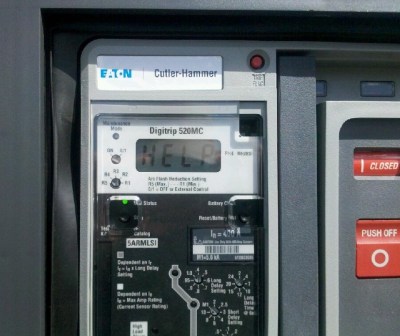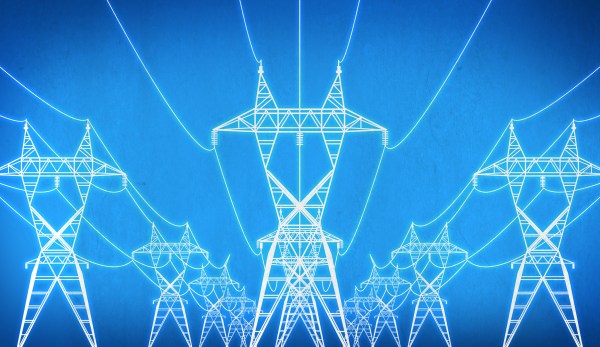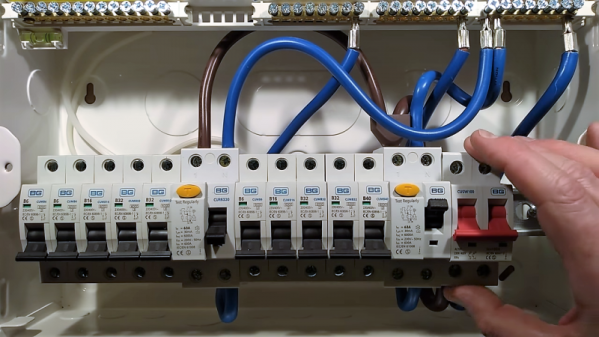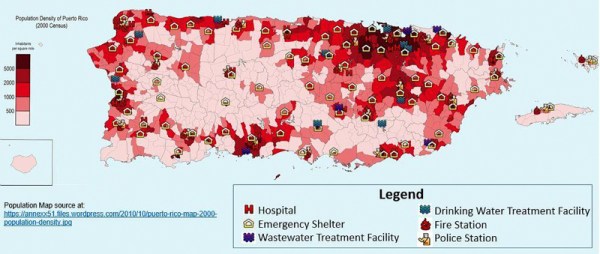The power grid is a complicated beast, regardless of where you live. Power plants have to send energy to all of their clients at a constant frequency and voltage (regardless of the demand at any one time), and to do that they need a wide array of equipment. From transformers and voltage regulators to line reactors and capacitors, breakers and fuses, and solid-state and specialized mechanical relays, almost every branch of engineering can be found in the power grid. Of course, we shouldn’t leave out the most obvious part of the grid: the wires that actually form the grid itself.
grid35 Articles
A Peek Inside A Typical British Residential Power Panel
No matter what field you’re in, it’s interesting and instructive to find out how others practice it. That’s especially true with electrical distribution systems, where standards and practices differ from country to country and even between regions. This tour of a typical British residential electrical panel is a great example of the different ways that the same engineering problems can be solved, and the compromises that always attend any design.
We’re used to seeing [Big Clive] tearing interesting devices to bits, but rest assured that this electrical panel remains largely intact as it gives up its secrets. Compared to the distribution panels and circuit breakers common in North American residential construction, the British consumer unit is a marvel of neatness and simplicity. True, the unit on display hasn’t been put into service yet, and things will no doubt change once an electrician is through with it, but the fact that everything is DIN rail mounted is pretty cool. [Clive] explains a few of the quirks of the panel, such as the fact that what looks like a main breaker is in fact just an isolation switch, and that there are a pair of residual current devices (RCDs), which we call ground-fault circuit interrupters (GFCIs) in North America, that also don’t act as circuit breakers, despite appearances. A stout bus bar is provided to link the RCDs to adjacent circuit breakers, forming two groups that are separately protected from ground faults.
[Clive] notes with dismay that the lugs of the bus bar can actually be inserted behind the rising clamp terminal on the breaker, resulting in poor connections and overheating. Still, we wouldn’t mind some of these concepts brought to panels in North America, which we covered a bit in a discussion on circuit protection a while back.
Continue reading “A Peek Inside A Typical British Residential Power Panel”
Adventures In Power Outage Hacking
The best type of power outage is no power outage, but they will inevitably happen. When they do, a hacker with a house full of stuff and a head full of ideas is often the person of the hour. Or the day, or perhaps the week, should the outage last long past the fun little adventure phase and become a nuisance or even an outright emergency.
Such was the position that [FFcossag] found himself in at the beginning of January, when a freak storm knocked out power to his community on a remote island in the middle of the Baltic Sea. [FFcossag] documented his attempts to survive the eight-day outage in vlog form, and although each entry is fairly long, there’s a lot to be learned from his ordeal. His main asset was a wood cook stove in the basement of the house, which served as his heat source. He used a car radiator and a small water pump to get some heat upstairs – a battery bank provided the power for that, at least for a while. The system evolved over the outage and became surprisingly good at keeping the upstairs warm.
The power eventually came back on, but to add insult to injury, almost as soon as it did, the ground-source heat pump in the house went on the fritz. A little sleuthing revealed an open power resistor in the heat pump control panel, but without a replacement on hand, [FFcossag] improvised. Parts from a 30-year-old TV transmitter were close at hand, including a nice handful of power resistors. A small parallel network gave the correct value and the heat pump came back online.
All in all, it was a long, cold week for [FFcossag], but he probably fared better than his neighbors. Want to be as prepared for your next outage? Check out [Jenny]’s comprehensive guide.
A Look At Liquid Dielectrics
One evening quite a few years ago, as I was driving through my hometown I saw the telltale flashing lights of the local volunteer fire department ahead. I passed by a side road where all the activity was: a utility pole on fire. I could see smoke and flames shooting from the transformer and I could hear the loud, angry 60 Hz buzzing that sounded like a million hornet nests. As I passed, the transformer exploded and released a cloud of flaming liquid that rained down on the road and lawns underneath. It seemed like a good time to quit rubbernecking and beat it as fast as I could.
I knew at the time that the flaming liquid was transformer oil, but I never really knew what it was for or why it was in there. Oil is just one of many liquid dielectrics that are found in a lot of power distribution equipment, from those transformers on the pole to the big capacitors and switchgear in the local substation. Liquid dielectrics are interesting materials that are worth taking a look at.
Modernizing Puerto Rico’s Grid
After two massive hurricanes impacted Puerto Rico three months ago, the island was left with extensive damage to its electrical infrastructure. Part of the problem was that the infrastructure was woefully inadequate to withstand a hurricane impact at all. It is possible to harden buildings and infrastructure against extreme weather, and a new plan to restore Puerto Rico’s power grid will address many of these changes that, frankly, should have been made long ago.
Among the upgrades to the power distribution system are improvements to SCADA systems. SCADA allows for remote monitoring and control of substations, switchgear, and other equipment which minimizes the need for crews to investigate problems and improves reliability. SCADA can also be used for automation on a large scale, in addition to the installation of other autonomous equipment meant to isolate faults and restore power quickly. The grid will get physical upgrades as well, including equipment like poles, wire, and substations that are designed and installed to a more rigorous standard in order to make them more wind- and flood-tolerant. Additional infrastructure will be placed underground as well, and a more aggressive tree trimming program will be put in place.
The plan also calls for some 21st-century improvements as well, including the implementation of “micro grids”. These micro grids reduce the power system’s reliance on centralized power plants by placing small generation facilities (generators, rooftop solar, etc) in critical areas, like at hospitals. Micro grids can also be used in remote areas to improve reliability where it is often impractical or uneconomical to service.
While hurricanes are inevitable in certain parts of the world, the damage that they cause is often exacerbated by poor design and bad planning. Especially in the mysterious world of power generation and distribution, a robust infrastructure is extremely important for the health, safety, and well-being of the people who rely on it. Hopefully these steps will improve Puerto Rico’s situation, especially since this won’t be the last time a major storm impacts the island.
Hacking Into…. A Wind Farm?
Pick a lock, plug in a WiFi-enabled Raspberry Pi and that’s nearly all there is to it.
There’s more than that of course, but the wind farms that [Jason Staggs] and his fellow researchers at the University of Tulsa had permission to access were — alarmingly — devoid of security measures beyond a padlock or tumbler lock on the turbines’ server closet. Being that wind farms are generally in open fields away from watchful eyes, there is little indeed to deter a would-be attacker.
[Staggs] notes that a savvy intruder has the potential to shut down or cause considerable — and expensive — damage to entire farms without alerting their operators, usually needing access to only one turbine to do so. Once they’d entered the turbine’s innards, the team made good on their penetration test by plugging their Pi into the turbine’s programmable automation controller and circumventing the modest network security.
The team are presenting their findings from the five farms they accessed at the Black Hat security conference — manufacturers, company names, locations and etc. withheld for obvious reasons. One hopes that security measures are stepped up in the near future if wind power is to become an integral part of the power grid.
All this talk of hacking and wind reminds us of our favourite wind-powered wanderer: the Strandbeest!
[via WIRED]
How Smart Is The Grid?
Marketing and advertising groups often have a tendency to capitalize on technological trends faster than engineers and users can settle into the technology itself. Perhaps it’s no surprise that it is difficult to hold back the motivation to get a product to market and profit. Right now the most glaring example is the practice of carelessly putting WiFi in appliances and toys and putting them on the Internet of Things, but there is a similar type of fiasco playing out in the electric power industry as well. Known as the “smart grid”, an effort is underway to modernize the electric power grid in much the same way that the Internet of Things seeks to modernize household appliances, but to much greater and immediate benefit.

Photo by Bryan Cockfield
To that end, if there’s anything in need of modernization it’s the electric grid. Often still extensively using technology that was pioneered in the 1800s like synchronous generators and transformers (not to mention metering and billing techniques that were perfected before the invention of the transistor), there is a lot of opportunity to add oversight and connectivity to almost every part of the grid from the power plant to the customer. Additionally, most modern grids are aging rapidly at the same time that we are asking them to carry more and more electricity. Modernization can also help the aging infrastructure become more efficient at delivering energy.
While the term “smart grid” is as nebulous and as ill-defined as “Internet of Things” (even the US Government’s definition is muddied and vague), the smart grid actually has a unifying purpose behind it and, so far, has been an extremely useful way to bring needed improvements to the power grid despite the lack of a cohesive definition. While there’s no single thing that suddenly transforms a grid into a smart grid, there are a lot of things going on at once that each improve the grid’s performance and status reporting ability.

















